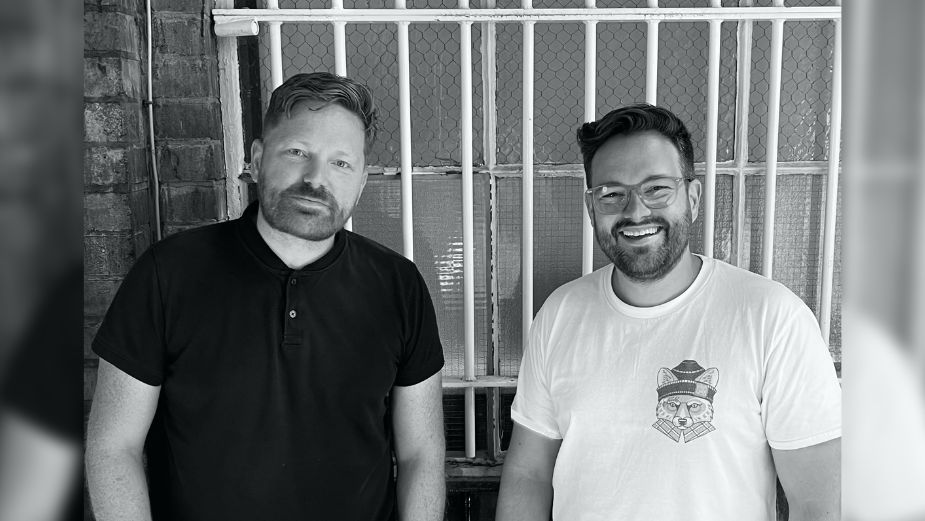
Working Smarter: the Lessons Clearcut Sound Studios is Applying to Sound Sessions

Before covid hit and forced everyone to stay at home, completing a project without a creative, producer, or client in attendance was a rare thing. Linking studio to studio to record voice artists across the globe was commonplace. However, recording talent from their home voice booths while dialling in production people, agency folk, and clients alike to collaborate on a project with everyone seeing the edit and each other in real time? Well, that’s when 2020 got interesting.
The smooth process of dial-in sound sessions that we have today was made possible after the trial and error of early lockdowns. “Thankfully, the technology was already there but no one was making the best use of it because we didn’t have to, so there was a steep learning curve with everyone working out how to best use it,” says James Clark, Clearcut’s senior sound engineer. James found himself playing the role of tech support, especially with voiceover actors, as people shared their desktops and let him take over, updating software and installing essential applications - “before there just wasn’t a need to be that tech savvy.”
A lot of the advice given out by Clearcut Sound also focused on noise reduction. “We did advise a few people to get under the duvet to record or - if they were game - inside the wardrobe,” laughs James.
Even with the initial challenges, the team at Clearcut Sound Studios quickly adjusted to produce incredible sounding work that no one would guess was done remotely. “A promo for BBC’s Top Gear was the job where we realised that covid was here to stay and that we’ll need to get it all done remotely. We worked it out as we went along. I asked to be briefed over Zoom, then cracked on with the job and had the client rejoin at different points to check in on the mix,” James adds. “The entirety of Marks & Spencer’s 2021 Christmas campaign, with Tom Holland as Percy Pig, was done remotely. Plus the spots we did for Jaguar and Royal Mail,” recalls Chris.
The future of sound sessions
Two years and countless sessions on, the team can now allow themselves an opportunity to reflect on what’s changed and in what direction they want their industry to travel. There has been a lot of back to the office talk - four days here, work from where you want there, but what about back to the sound studio? While some clients have returned to attend sessions, attendance levels are still not back to where they were at the start of 2020, despite the same level, if not more, work being completed.
So what is Clearcut Sound’s stance on the future of sound sessions? They’re taking a balanced approach that considers the quality of the work and the quality of life and flexibility everyone has gotten used to over the past two years. The team is comfortable with doing some work remotely but prefers to complete some aspects with clients in attendance. “Voice recording, for example, is always best done in person. Nothing beats being present with a voice over artist, allowing them to focus on what they need to do and being able to direct face to face. Final mixing likewise benefits from in-person sessions and the best monitoring environment that we have in our studios.” Chris says.
“But remote sessions will continue to have their place.” James adds: “Making quick adjustments mid-project is far more efficient remotely than waiting for everyone to get together. Let’s utilise the tech we’ve got and allocate our time and resources as efficiently as possible.”
With a mixed approach in mind - below are some best practices everyone can adopt to get the most out of their sound sessions, according to Chris and James.
1) Make sure you attend when you need to. Voiceovers and final mixes are best done in the studio.
For remote scenarios:
2) Get good headphones: this has always been a bit of a problem. Listening to mixes through laptop, phone, or through cheap headphones isn’t going to give the best representation of the mix. It often results in requests for adjustments that could be avoided in the first place if the session was done in person, or with the right headphones.
3) A really good internet connection is vital. When listening to audio, the quality is automatically adjusted to match the internet speed, once again distorting how a mix sounds. The higher the internet speed, the better when it comes to sound quality. If this isn’t possible then get yourself down to the studio.
4) If you need to record remotely, find a quiet place - a really quiet place. Quiet is relative but for recordings, total silence is what’s needed. Being near a window isn’t good enough as microphones pick up outside sounds; if your walls are thin, your neighbour’s activity will be recorded too. A cupboard under the stairs or, in a pinch, a wardrobe are the best bets!
As much as technology has enabled us all to work remotely, some things are still best done in person. Having trouble with points two through four? The team at Clearcut will see you at the studio.













